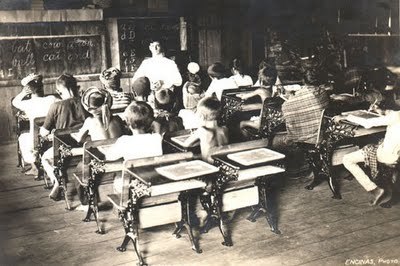Compared to the brutal and quite backward Spanish colonizers, the American colonizers in their nearly half-century rule had brought a lot of positive contributions to Philippine economic development regardless of the controversies like the Philippine-American War or unequal treaties like the Parity Rights, U.S. bases agreement before, etc.
Let me share some of the disaster relief and other forms of aid our former colonizer the United States of America (USA) continue to share with us here in the Philippines.
Special thanks to the U.S. Embassy in Manila for providing me these statistics below.
Merry Christmas to all!
(Image of this circa 1945 Philippine postage stamp under U.S. colonial rule sourced from 123rf.com)

(Iimage below of U.S.A. colonial officials in tropical islands of the Philippines sourced from mutantfrog.com)

(An American flag decorates a public transport vehicle called "jeepney" in Metro Manila, the Philippines. This image below sourced from noelmaurer.typepad.com)

U.S. Government Assistance to the Philippines for Typhoon Pablo Relief
Manila, December 21, 2012 -- The U.S. Government extends its deepest condolences for the devastation and loss of life caused by Typhoon Pablo (international name Bopha) in the southern Philippines. As the Christmas holiday approaches, we continue to work hand in hand with the Government of the Philippines and non-governmental organizations to make sure that assistance is reaching those who need it most in typhoon-ravaged areas of Davao. Below is a summary of all activities undertaken by the U.S. Government to assist with the disaster relief effort since December 5.

Let me share some of the disaster relief and other forms of aid our former colonizer the United States of America (USA) continue to share with us here in the Philippines.
Special thanks to the U.S. Embassy in Manila for providing me these statistics below.
Merry Christmas to all!
(Image of this circa 1945 Philippine postage stamp under U.S. colonial rule sourced from 123rf.com)

(Iimage below of U.S.A. colonial officials in tropical islands of the Philippines sourced from mutantfrog.com)

(An American flag decorates a public transport vehicle called "jeepney" in Metro Manila, the Philippines. This image below sourced from noelmaurer.typepad.com)
U.S. Government Assistance to the Philippines for Typhoon Pablo Relief
FACT SHEET
760,500,000: Total number, in Philippine Pesos, provided by the U.S. Government, through the United States Agency for International Development (USAID), over the past five years to aid with the disaster response in the Philippines. The United States has been a key partner of the Philippines in providing immediate humanitarian response during natural calamities. The U.S. Government is helping the Philippines cope with the effects of calamities by improving mechanisms to effectively adapt and respond to natural disasters. This includes responses to Tropical Storm Ketsana (Ondoy) in 2009, Typhoon Megi (Juan) in 2010, Tropical Storm Washi (Sendong) in 2011, and Typhoon Bopha (Pablo) in 2012.
291,100,000: Total number, in Philippine Pesos, the U.S. Government, through USAID, plans to provide in emergency assistance to individuals affected by Typhoon Pablo (international name Bopha) in the Philippines. This funding is helping address the humanitarian needs of typhoon-affected populations in Compostela Valley, Davao Oriental, and Negros Oriental provinces, and includes support for emergency shelter, logistics, and water, sanitation, and hygiene activities, as well as the provision of emergency relief commodities and food.
167,000,000: Total number, in Philippine Pesos, provided by the U.S. Government in Fiscal Year 2012, through USAID, to support disaster risk reduction efforts by local governments and communities in the Philippines.
2,100,000: Kilos of rice provided by the U.S. Government, through USAID, and allocated to the U.N. World Food Program for emergency distribution to typhoon victims, along with pulses, vegetable oil, and salt, plus a fortified blended food for pregnant and lactating women, children under five, and elderly. The donation is worth PHP 102,500,000.
343,278: Kilos of relief goods flown by the U.S. Military to Davao from Manila via two Marine Corps KC-130J Hercules aircraft since December 8. The relief goods consist of family ration packs, relief aid boxes containing personal hygiene items and clothing, high-energy biscuits, rice, generators, mosquito nets, blankets, sleeping mats, tents and liquid containers.
90,000: Estimated number of displaced people in the Philippines who will receive the rice donation from the U.S. Government, through USAID.
37,980: Square kilometers surveyed for aerial assessments with assistance from the Joint Special Operations Task Force – Philippines (JSOTF-P) to aid the Philippine Government in its search and rescue mission. JSOTF-P provided the aerial assessments over Davao Del Sur, across Compostela Valley and along the east coast of Mindanao from Davao Oriental to Boston. These observations from the air provided over 600 images to advisers on the ground, in order to assess damage and facilitate follow-on distribution of relief aid and supplies to areas where it is most needed.
20,819: Gallons of water per hour produced by water purification units from the U.S. Marine Forces Pacific Command, with assistance of four experts in water purification.
20,000: Estimated number of families that will benefit from 109 tons of plastic sheeting sent to the typhoon-affected areas by USAID for emergency shelters. This plastic sheeting was consigned to the U.N. World Food Program for distribution to the various members of the Shelter Cluster, headed by the Philippine Department of Social Welfare and Development.
7,200: Square Nautical Miles searched by the P-3 Orion aircraft to aid search and rescue efforts in the Straights of Sarangani.
113: Number of hours spent flying the KC-130J Hercules aircraft to deliver supplies over 22 flights, since December 8.
7: Response time, in hours, between the Philippine Government request to assist with the typhoon response, and the arrival of the U.S. KC-130J Hercules aircraft in Manila.
(Image below of an American woman teaching Filipino kids English in the 1900s start of U.S. colonial rule, this photo sourced from philippines1900.tumblr.com)

No comments:
Post a Comment